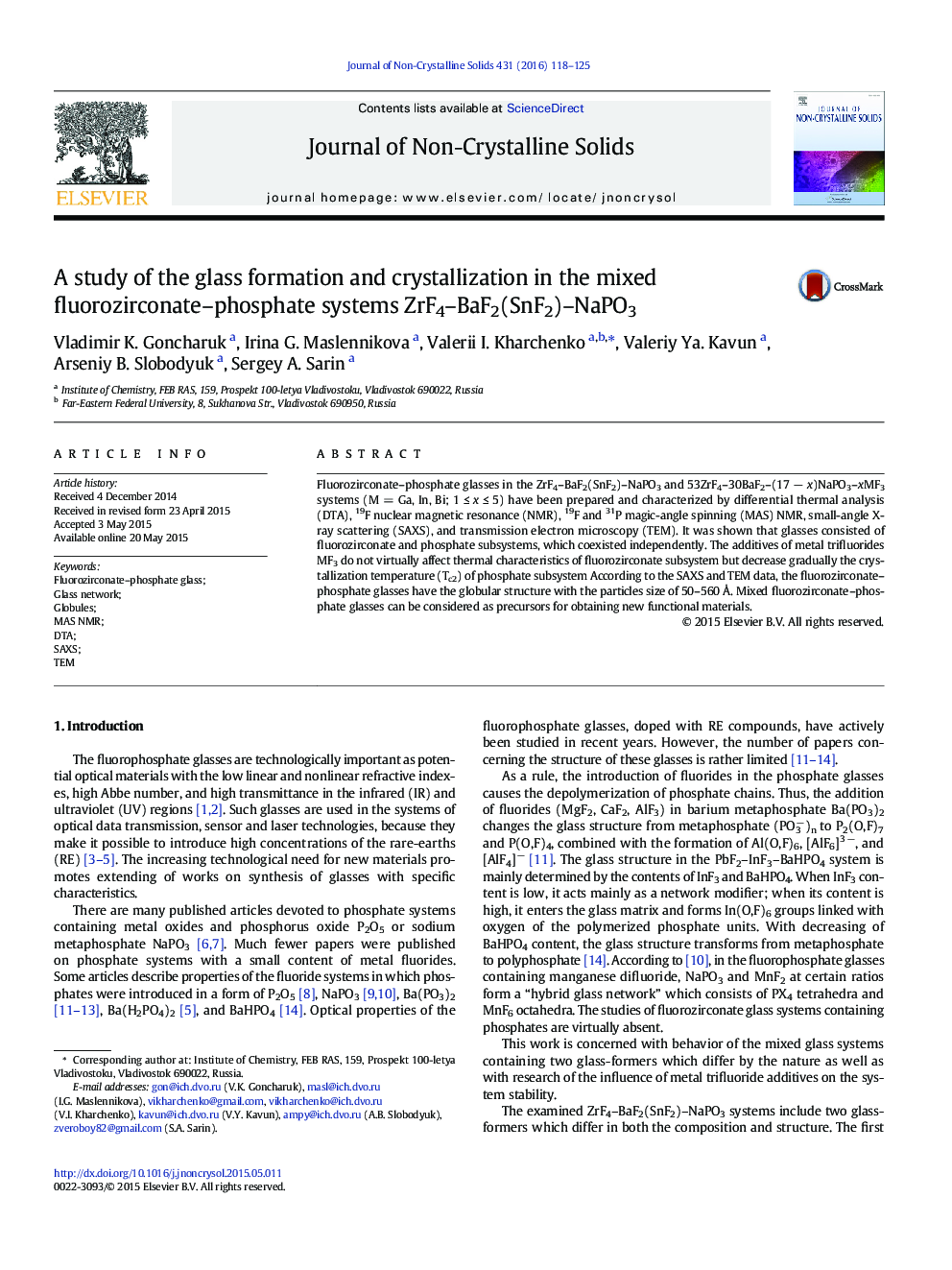| Article ID | Journal | Published Year | Pages | File Type |
|---|---|---|---|---|
| 1480504 | Journal of Non-Crystalline Solids | 2016 | 8 Pages |
•ZrF4–BaF2(SnF2)–NaPO3, 53ZrF4-30BaF2–(17 − x)NaPO3–xMF3 glasses (1 ≤ x ≤ 5) were studied.•Behavior and properties of these glasses are similar to fluorozirconate glasses.•The fluorozirconate and phosphate subsystems in the glasses coexist independently.•The glass microstructure is globular with a particle diameter of 50–560 Å.•These glasses can be used as precursors for the mixed optical nanoceramics.
Fluorozirconate–phosphate glasses in the ZrF4–BaF2(SnF2)–NaPO3 and 53ZrF4–30BaF2–(17 − x)NaPO3–xMF3 systems (M = Ga, In, Bi; 1 ≤ x ≤ 5) have been prepared and characterized by differential thermal analysis (DTA), 19F nuclear magnetic resonance (NMR), 19F and 31P magic-angle spinning (MAS) NMR, small-angle X-ray scattering (SAXS), and transmission electron microscopy (TEM). It was shown that glasses consisted of fluorozirconate and phosphate subsystems, which coexisted independently. The additives of metal trifluorides MF3 do not virtually affect thermal characteristics of fluorozirconate subsystem but decrease gradually the crystallization temperature (Tc2) of phosphate subsystem According to the SAXS and TEM data, the fluorozirconate–phosphate glasses have the globular structure with the particles size of 50–560 Å. Mixed fluorozirconate–phosphate glasses can be considered as precursors for obtaining new functional materials.
